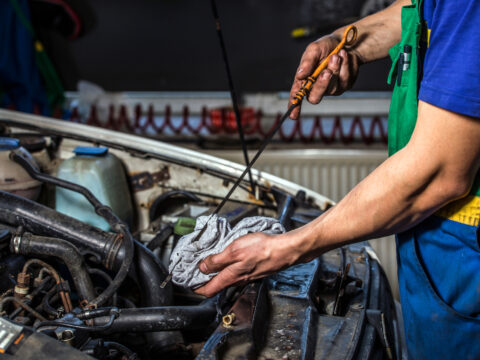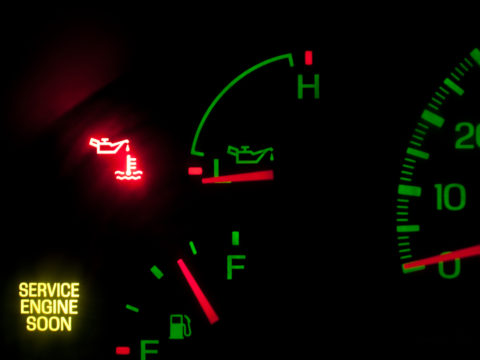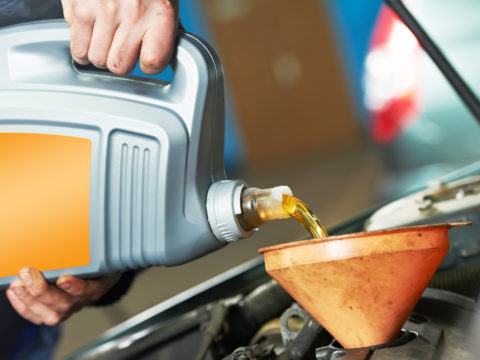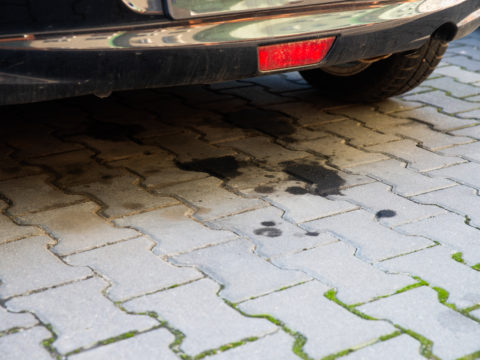Oil and gas are two of the most pivotal parts of any working car. Without them, a vehicle will not have the ability to go anywhere.
Electric cars aside, gas is the substance every car uses to run. That is why there is almost always a gas station nearby, no matter where you are. As soon as a car’s fuel tank runs out of gas, it will come to a creeping halt, and it won’t get any further without first acquiring more gas.
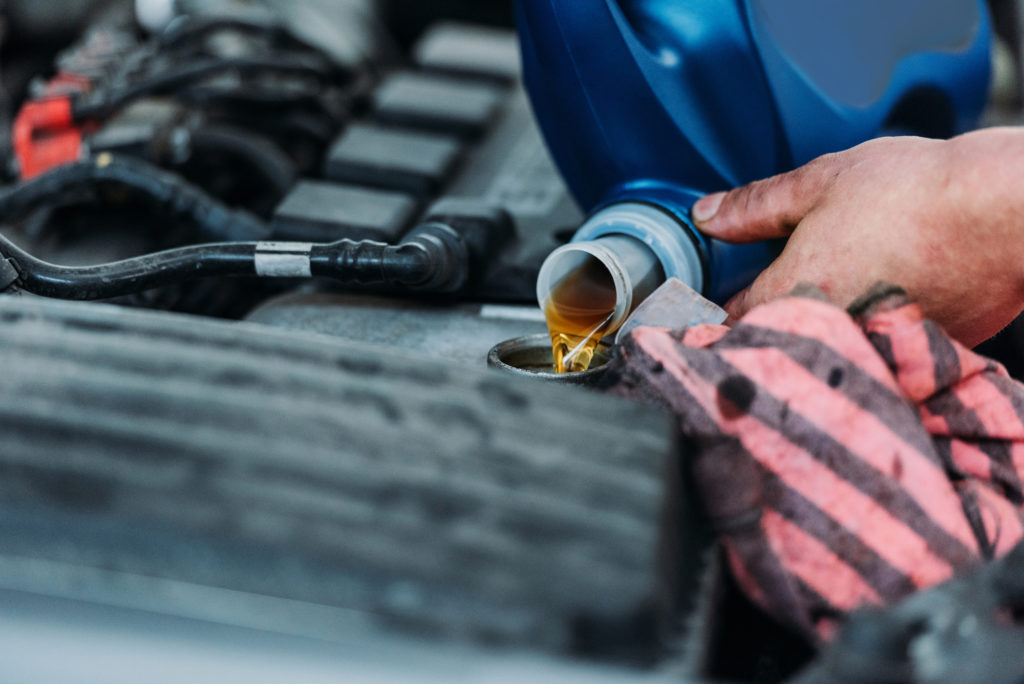
On the other hand, oil plays an equally important role by keeping the working parts of a car’s engine cool. If there is no oil in the car, there is no liquid to lubricate the engine, and without lubrication, there is an extremely high chance for the engine to suffer damage and overheating.
Because engine damage is no joke, it is also essential for a car to get oil changes when necessary. Otherwise, the old oil will develop sludge and lose its ability to keep dirt and debris off the engine.
Sometimes, oil and gas can begin to mix, and you will know that this is happening because your oil will start smelling like gas. Oil and gas mixing will not make your car undrivable, but it certainly will not make your car drive more smoothly.
Contents
When Does Oil/Gas Mixing Become Too Much?
When your car’s oil pan takes on more than 2.5% gas, it’s effectively over the safety threshold.
An oil pan is the part of a car that allows oil to flow into the engine and help maintain the proper temperature and lubrication. A pump takes the oil from the oil pain and transports it to a filter, from which it then moves on to the actual engine. Using a dipstick is a reliable and easy method to determine when your oil and gas mix too much in the oil pan.
To do this, go under the hood of your car and pull out the dipstick. If it smells like gas, you can safely assume that your car’s oil pan has at least some gas in it.
Reasons Your Oil Smells Like Gas
Here are a few reasons why your car’s oil may be smelling like gas.
1) Driving Short Distances Too Often
When you turn your car on and start driving, the engine does not automatically heat up to its maximum temperature. The temperature increase is gradual, so the engine will never heat up enough to burn off the gas when gas enters the oil pan if you do not allow enough time.
This means that the gas which enters the oil pan will then remain there and mix in with the oil, ultimately resulting in your vehicle’s oil smelling like gas.
Driving short distances is one of the most common culprits of this occurrence, as your car’s engine never gets a chance to heat up if it is constantly stopping and starting.
2) A Fuel Mixture That Is Too Rich
Fuel mixture refers to the air-fuel ratio (AFR) of a vehicle, which is the ratio of air to solids, liquids, and gaseous fuels when they are part of a combustion process. And the combustion process comes from the internal combustion engine that gasoline and diesel engines use.
The ideal gas to air ratio is 15:1. However, several things can throw this ratio off significantly, and your car’s engine will start injecting more fuel and less air in its combustion process.
A mass airflow sensor (MAF) is a piece of equipment that determines the air-fuel mixture the engine takes in. When the sensor becomes faulty, its calculation will not be accurate, leading to too much air entering the engine and not enough fuel.
Another sensor known as the manifold absolute pressure (MAP) sensor is an alternative to the MAF sensor that some cars have, although some vehicles even have both.
This sensor determines the air-fuel mixture depending on the air pressure in the intake manifold instead of calculating the exact air going into the engine the way the MAF sensor does. However, similar to the MAF sensor, the MAP sensor can grow faulty and give wrong calculations that will lead to your car’s engine running rich.
A faulty O2 sensor may also cause a similar issue, as it will fail to sense the air-fuel mixture of the last combustion and not relay the correct information to the engine control unit. When this happens, the unit might add more fuel to the subsequent combustion despite there already being plenty of fuel for the ideal ratio.
3) A Faulty Injector
Fuel injectors are the valves in a car containing pressurized fuel from the fuel pump. In modern vehicles, fuel injectors direct fuel towards the intake manifold, where air and fuel mix.
When a fuel injector malfunctions, it can cause issues with engine stalling, rough idling, misfiring engine, poor fuel economy, and gas can start to leak into the vehicle’s oil.
4) Bad Piston Rings
Piston rings are an integral part of a car that helps the engine work properly. They act as heat conductors, seals for gas combustion, and controllers for engine lubrication.
If pistons rings suffer damage, they will fail to carry out all of those tasks with maximum efficiency, and your car may also suffer from gas leaking into the oil pan.
Luckily, you can carry out a compression test to confirm that failing piston rings are the actual cause of the leak.
5) Engine Misfiring
An engine misfire occurs when one or multiple cylinders fail to supply power.
While a faulty fuel injector can cause an engine misfire, this issue can also happen if the O2 sensor is defective or a spark plug goes bad.
Because an engine misfire is also a sign that the air and gas mixture in the vehicle failed to ignite properly, it naturally creates problems in the engine system, and you will likely want to check the oil pan to see if gas somehow found its way inside.
6) Faulty Carburetor
While a faulty carburetor primarily affects only older vehicles, it is still worth knowing this cause if you own an older car with oil smelling of gas.
The carburetor is the device that brings air and fuel together in the correct ratio for the combustion process. Because of this, if the carburetor starts malfunctioning, it can get mixtures with bad ratios that are too rich, which will lead to an engine backfiring and overheating.
7) Using Gas Instead of Oil
In somewhat rare instances, if your car’s oil smells like gas, it may smell like that because it is indeed gas.
It may seem impossible to confuse a gas container with a container of oil, but mistakes do happen, so do not entirely rule out the possibility.
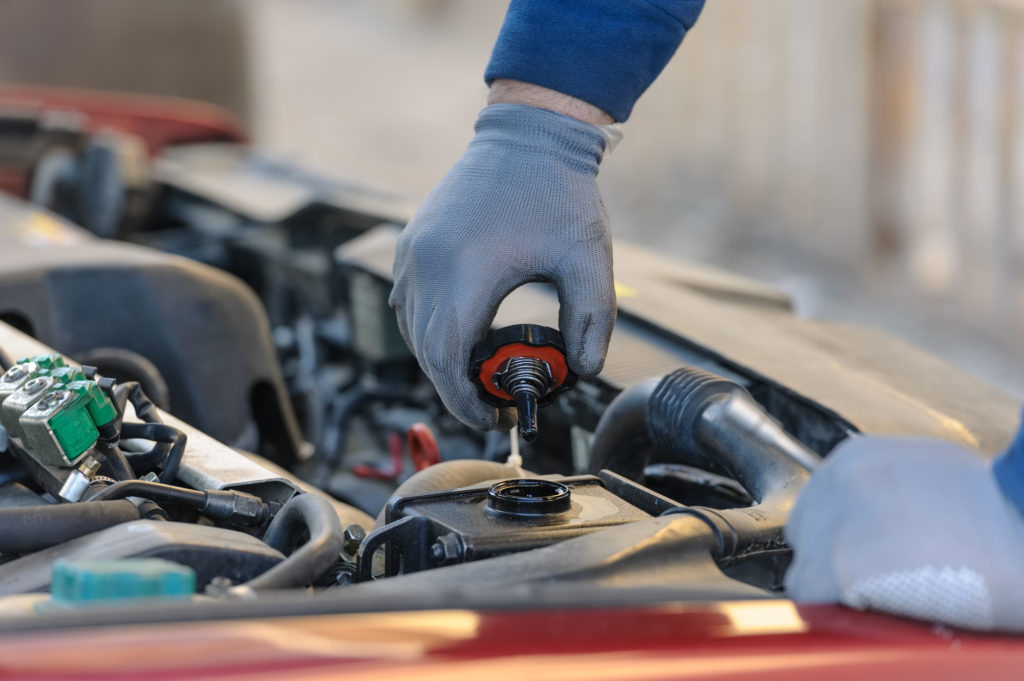
Other Symptoms of Oil and Gas Mixing
Now that we’ve gone over some of the causes of oil that smells like gas, let’s also go over some symptoms you can look out for to detect this issue before it gets out of hand.
1) Strong Smell of Fuel
Once your car’s oil and gas mix to a certain degree, the smell will become quite strong, and it will continue to strengthen the more they mix. When you’re driving, you’ll likely pick up on the scent, as its consistency will prove difficult to ignore, especially if you know that the smell is not ordinarily present.
2) Opaque Exhaust
While having gas in your car’s oil pan will create a noticeable smell, it will also change the color of the exhaust coming out of the vehicle’s tailpipe to white.
The white exhaust coming from a tailpipe does not necessarily mean that gas and oil are mixing, but it does mean that something is wrong with the vehicle’s internal combustion system.
3) Dipstick Smells Like Gas
Earlier, we briefly went over using a dipstick to check the oil for the smell of gas. To reiterate, if you check your dipstick and it smells like gas, that almost surely means that gas is in the oil pan. This is primarily because the dipstick is constantly sitting in oil, so it smelling like gas can only mean that gas is in the oil.
Additionally, you can check the consistency of the oil to see if it quickly falls off the dipstick. If it does, there is gas in the oil, as oil will typically not fall off the dipstick easily.
4) High Oil Level
Unless you accidentally overfill your car with oil, the oil level will always stay consistent. That said, if you’re sure you did not overfill your car with oil but find that the oil levels are unusually high, this likely means that there is gas in the oil.
Consequences of Oil Getting Into Gas
Since oil and gas do not go well together when the two mix, they can create harmful results that vary in severity.
Lowered Oil Viscosity
Oil viscosity is the degree to which oil can pour at a specific temperature. A thin oil with low viscosity pours very quickly at a low temperature compared to thick oil with high viscosity.
If gas mixes with oil, this will severely reduce the oil’s viscosity. In some cases, the viscosity will lower to the point where the oil can no longer lubricate the engine properly, leading to a myriad of issues.
Without the proper amounts of lubrication, the engine’s heat can lead to significant wear and tear on various parts of a car. And, of course, the engine can overheat if its temperature rises high enough.
To make matters worse, once your car’s engine starts suffering from these issues, you can expect its performance to worsen significantly. Specifically, your vehicle’s fuel economy will turn extremely poor, and you will not get nearly as many miles out of a full tank of gas as you should.
Because engine problems can damage your vehicle’s overall health and performance, avoiding the primary causes of engine problems is crucial. And while many things can lead to engine issues, oil mixing with gas is among the worst you will want to avoid.
How to Prevent Oil From Getting Into Gas
Despite numerous causes for gas getting into your car’s oil pan and mixing with the oil, you can take several steps to prevent this issue from arising.
First and foremost, carry out routine maintenance on your vehicle to the best of your ability. This is a given for anyone who wishes to keep a car in the best shape for the longest time possible, so don’t neglect the effectiveness of routine maintenance. It is without question the best way to detect and snuff out issues before they can grow.
If you want to be safe and can afford the cost, consider taking your car to a certified mechanic for regular maintenance. That way, you can get the opinion of a professional.
Changing your pistons rings will also help keep gas and oil apart.
Because piston rings play such a significant role in engine functionality, you do not want to keep them once they begin malfunctioning and causing problems. Changing piston rings is not too difficult, but it requires some technical knowledge to do successfully. So, if you are not confident in your skills, have a professional do the process for you.
In contrast, to routine maintenance and changing piston rings, taking long drives is an easy step you can do to prevent oil from mixing with gas. The drives do not need to be incredibly lengthy. A good 20 to 30 minutes is preferable, as it takes around five to 15 minutes for a car’s engine to warm up.
Lastly, another easy step is not using canisters to fill your vehicle with fluids. Again, mistaking a canister of oil for gas and vice versa might not seem like the most common thing, but it does happen.
If you must you canisters, ensure that they all have labels, so you minimize your chances of mixing them up accidentally.

